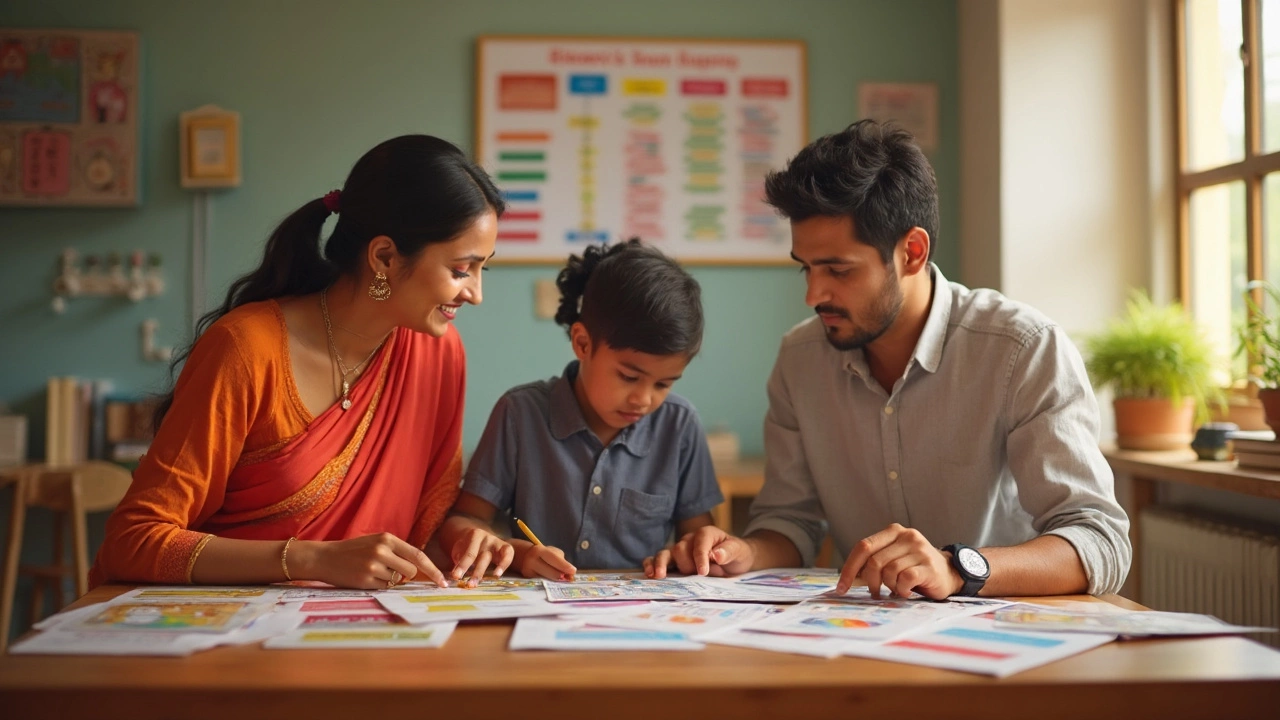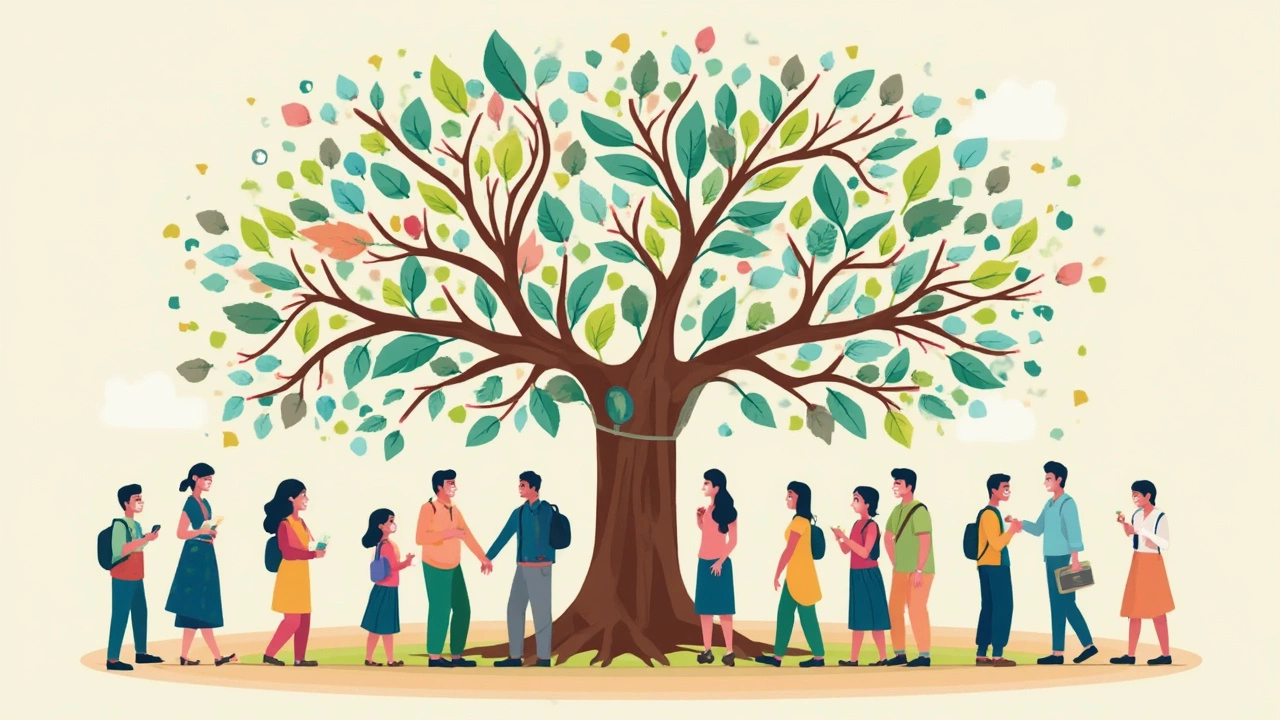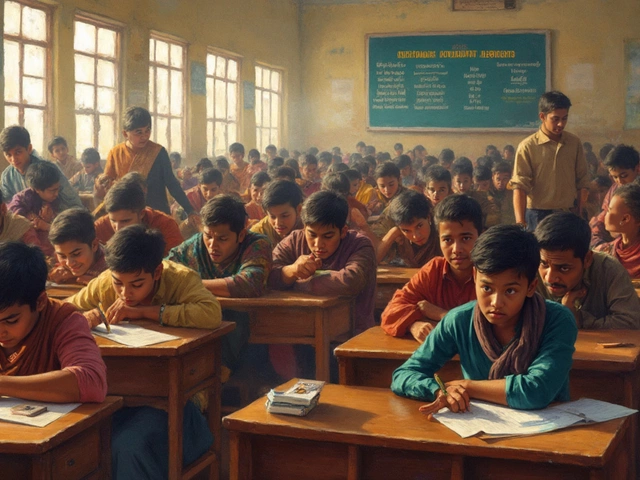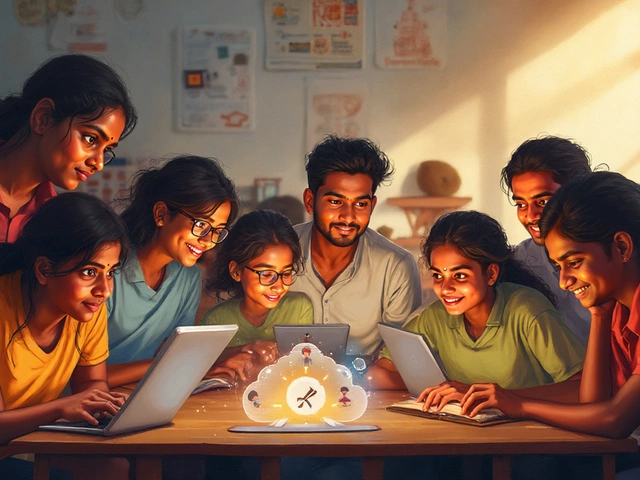
Parents and students get caught up in the "which board is best" dilemma almost every year. With options like CBSE, ICSE, state boards, and even international boards staring you in the face, making a call isn’t simple. There’s a reason why over 20,000 schools in India choose CBSE, though. It’s not just about textbooks or exams—there’s a lot happening behind the scenes that affects your everyday school life and your shot at future opportunities.
CBSE has evolved over the years. It’s not stuck with traditional rote learning anymore; today, its focus is on practical understanding and real-life applications. This is exactly what colleges and job recruiters dig for. Still, plenty of myths float around about which board means more marks, which one is “harder,” or which will help you crack entrance exams. Let’s break through the noise and dig into what you actually need to know.
- School Boards in India: The Main Players
- Why CBSE Keeps Getting More Popular
- CBSE vs ICSE vs State Boards: The Real Differences
- CBSE Syllabus: What You’ll Actually Learn
- Tips for Succeeding with the CBSE System
School Boards in India: The Main Players
India’s school system doesn’t just have one standard. Instead, there’s a handful of major boards—each with its own way of setting up subjects, exams, and day-to-day learning. If you’re picking a board, you’ll probably hear these names a lot:
- CBSE (Central Board of Secondary Education): Easily the most recognized across India, with over 20,000 schools hooked up to it. CBSE sets most national-level entrance exam papers, like NEET and JEE, so students often tilt towards it if they have medical or engineering dreams.
- ICSE (Indian Certificate of Secondary Education): Known for its detailed curriculum, ICSE is run by the CISCE. This board leans on English, offers a lot of subject options, and is popular in metro cities. The workload can feel heavier due to its broader approach.
- State Boards: Each Indian state has its own education board with local textbooks, language focuses, and exam rules. These cater to the specific culture and needs of each region. For example, the Maharashtra State Board is big in Mumbai and Pune, while Tamil Nadu’s state board rules in Chennai.
- International Boards: This includes IB (International Baccalaureate) and Cambridge (IGCSE). These came in for families who move often or want a more global education, but they’re usually pricier and found mostly in bigger cities.
Here’s a quick rundown on how many schools flock to each board, just to show you the picture:
| Board | Number of Schools (2024) | Where It’s Popular |
|---|---|---|
| CBSE | 20,650+ | Nationwide (major cities & towns) |
| ICSE | 2,975+ | Metro cities, private schools |
| Maharashtra State Board | 20,800+ | Maharashtra |
| Tamil Nadu State Board | 12,000+ | Tamil Nadu |
| IB & Cambridge | 1,000+ | Metro & international schools |
There’s no “one size fits all” answer since every board has its perks. If you’re eyeing all-India competitive exams or transfers, CBSE usually has a clear edge. But if you’re after deep language skills, regional focus, or global frameworks, the other boards have their own things going. It all boils down to your goals and, honestly, where you see yourself in the next few years.
Why CBSE Keeps Getting More Popular
There’s no missing the fact that more schools and families keep choosing CBSE every year. In 2024, there were almost 22,000 schools in India and abroad with a CBSE tag, and over 3.5 million students signed up for the CBSE Class 10 exams. But what’s really driving this trend?
The main thing: CBSE makes life easier for students who might have to move around for family or job reasons. Say your parents are in central government jobs and you get transferred to another state. With CBSE, you’ll find the same textbooks, syllabus, and style of lessons almost anywhere in India. That’s a huge relief for lots of families.
Then comes the entrance exam angle. The biggest tests for engineering and medicine—like CBSE’s own JEE Main or the NEET—are based on CBSE’s syllabus. You’re not learning extra or skipping basics, you’re just in sync with what these exams want. This gives CBSE kids a clear edge in the competition.
- National Recognition: CBSE certificates are accepted all over India, and even by many foreign universities.
- English Focused, but Hindi Friendly: While English is the main teaching language in most CBSE schools, you also get proper support for Hindi and other Indian languages.
- No Mugging Up: Over the last few years, CBSE has updated its textbooks and exam pattern. Questions now focus on logical thinking and real-world applications, not just memorizing facts.
- Constant Upgrades: The board rolls out regular changes in subjects and grading, based on feedback from schools and teachers. That keeps things fresh and relevant.
Here’s how CBSE has grown compared to other boards:
| Year | CBSE (Schools) | ICSE (Schools) | State Boards (Total) |
|---|---|---|---|
| 2015 | 17,000 | 2,200 | Approx. 120,000 |
| 2020 | 21,200 | 2,600 | Approx. 123,000 |
| 2024 | 21,900 | 2,900 | Approx. 125,000 |
State boards have large numbers, but they’re spread across different states and languages. CBSE’s steady growth shows more people now want a single, recognized system that works across India. It's just a lot more flexible and connected to what colleges and employers expect.

CBSE vs ICSE vs State Boards: The Real Differences
If you’re deciding between CBSE, ICSE, and State Boards, understanding the differences is key. Each board is built for a pretty different crowd. The CBSE syllabus is nationwide, so it works the same in Delhi as it does in Kerala. This makes it super handy for families that move around.
ICSE goes for depth. The subjects get covered in more detail, especially English and arts. You’re looking at stacks of writing, more projects, and a broader focus. State boards are all about the local language and content. Curriculum changes depending on where you live—Bengal, Andhra Pradesh, Maharashtra, or elsewhere—so some topics might pop up in one state but not in another.
Want some real numbers? Here’s how these boards stack up:
| Feature | CBSE | ICSE | State Boards |
|---|---|---|---|
| No. of Schools | ~21,500 | ~2,100 | 1,00,000+ |
| Medium | English/Hindi | Mainly English | Regional + English |
| Focus Area | Science, Maths, Tech | Languages, Arts, Science | Local Content |
| Transferability | Easy | Moderate | Hard (across states) |
Another thing—CBSE makes prepping for national entrance exams like JEE and NEET smoother since its pattern matches those tests. ICSE is preferred for students eyeing international boards later, since its English is at a pretty high level. State boards keep things flexible and affordable, but sometimes, the resources and exposure differ a lot from place to place.
To sum it up, the right pick depends on your family’s needs. Moving often? CBSE is practical. Love in-depth subjects, especially English or humanities? Check out ICSE. Want to stick to local language and culture? State boards usually offer that, and fees are usually the lowest.
CBSE Syllabus: What You’ll Actually Learn
The CBSE syllabus is built to cover the basics while keeping an eye on current trends. Unlike some boards that load you up with facts, CBSE tries to make you actually understand the stuff. Subjects across the board—Maths, Science, Social Science, Languages—have a clear structure so you know exactly what’s expected in each class.
For instance, in Science you won’t just mug up parts of plants or the periodic table. You’ll do experiments on separation techniques, talk about recent biological findings, and get practical experience in labs if your school’s got them. In Maths, stories around real-life problems are thrown in, so those formulas start to make sense. English isn’t just about grammar drills—it’s also about learning to debate, write emails, and even analyze cartoons.
- Most chapters end with exercises that focus on application, not just recollection. Past exam questions are often woven into textbooks.
- CBSE frequently updates content to match with national entrance exams like JEE and NEET.
- Computer Science and IT got a strong boost—Python became the preferred coding language for the higher secondary syllabus since 2018.
- Projects, debates, quizzes, and assignments now make up 20% or more of your grade in many subjects.
What makes CBSE stand out is its obsession with keeping things relevant. The board dropped chapters like “Democracy and Diversity” for certain years to reduce student load during the pandemic. And then, they added them back in after feedback from teachers, students, and parents. That flexibility matters.
“The CBSE curriculum tries to balance traditional learning with practical skills, setting kids up for both competitive exams and life,” says Dr. Rina Kumar, who runs curriculum planning at a top Delhi CBSE school.
Here’s a tip if you’re worried about the workload: CBSE has a defined exam pattern—weightage is clearly marked for theory and practicals. You can actually download the syllabus and sample papers for free from the official CBSE website before the year even begins, which makes planning way easier. Knowing what’s coming up can really help you stay ahead of the curve.

Tips for Succeeding with the CBSE System
Doing well in the CBSE system is about way more than just reading and memorizing. CBSE has a clear tilt towards practical learning, so if you stick to the old “mug up everything” style, you’ll hit a wall. What works better? Smart planning, active learning, and knowing how CBSE actually tests you.
"CBSE’s approach is not only about scoring high marks, it’s about building a foundation for life skills and success in competitive exams." – Dr. Renu Singh, former CBSE school principal
First, get your hands on the NCERT textbooks. CBSE leans heavily on these. Over 90% of questions, especially in board exams, come straight from the NCERT books. Some folks get sidetracked with guides and reference books, but nothing beats the basics. If you’re prepping for JEE, NEET, or other big entrance tests, a strong NCERT base is a massive advantage.
- Stay consistent: Instead of last-minute cramming, break your study into daily chunks. Even 45 minutes a day can make topics stick.
- Work with sample papers: CBSE uploads sample papers and marking schemes every year. Practice with these—it's exactly what examiners use to frame real questions.
- Understand the exam pattern: Questions focus on concepts, application, and straightforward logic. If you’re only memorizing, you’ll miss application-based marks.
- Create mind maps and flashcards: These actually work, especially for subjects like science and social studies where facts feel endless.
- Join doubt sessions: Most CBSE schools offer extra help classes. Don’t wait until you’re totally lost—show up and ask questions early.
Here’s a quick comparison that always helps students:
| Action | Impact on Performance |
|---|---|
| Solving previous years’ papers (last 5 years) | Boosts scores by 8-15% (CBSE stats, 2024) |
| NCERT book revision | Improves concept clarity, helps crack 90% of exam questions |
| Taking regular mock tests | Reduces exam anxiety and spots weak areas |
And here’s something most people ignore: CBSE is invested in mental health now. They run free helplines every board season. Don’t be shy to use them if stress creeps up. Knowing the system and understanding what examiners want will save you hours and lift your scores. No hacks—just good habits, the right materials, and a bit of discipline.





